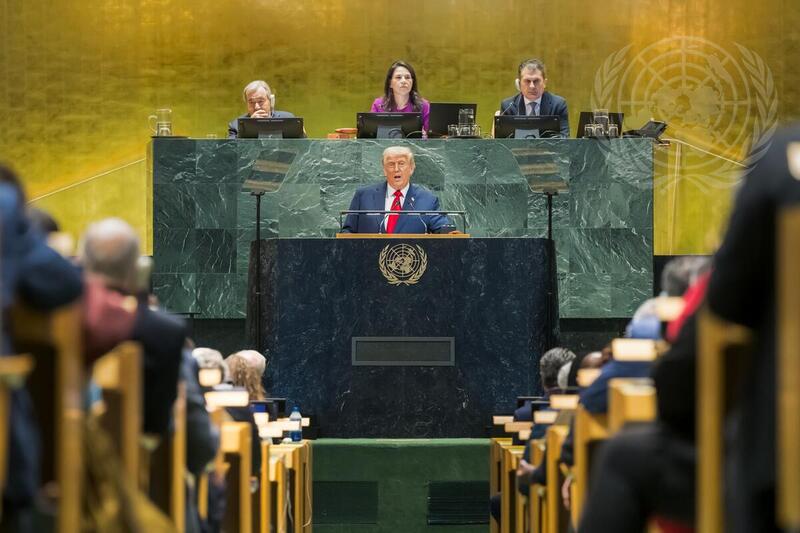Approaching the mouth of Zihuatanejo Bay, the tourist cruise ships follow the same wave-worn path
that the English pirate Francis Drake ventured centuries ago.
Zihuatanejo, nestled on the Pacific coast of the Mexican state of Guerrero, has come a long way from
the pristine bay European plunderers penetrated. Today it projects the duality of overdevelopment and
underdevelopment. Lush villas shroud some hills while shantytowns cling to others. In this municipality,
400 cases of dengue have been tallied up this year so far. Once-unimaginable traffic jams congest the
city center, and commercial chain stores increasingly compete with small businesses. A half-finished
rock jetty blocks the outflow of the dirty wastewater that flows into the bay. Although the National
Ecology Institute has blamed the jetty for the huge increase in pollution and residents demand that
it be dismantled, it still stands as a monument of defiance to the popular will.

Anchored in the bay, cruise ships unload their passengers into small boats that stream into the nearby
municipal pier. Hitting shore, the tourists grab their first impressions of the fabled land of Mexico
and its margarita breakfasts, smiling senoritas, and happy-go-lucky lifestyle. Yet the scene at the
pier subtly betrays a different reality than the images perfected in the postcard propaganda.
While naval boats stand ready to fend off any perceived threat to the mother ship, the visitors are
escorted through a fenced-off section of the pier guarded by Mexican marines toting automatic rifles.
Hundreds of newcomers are then scooped up by private tour guides. On the beachfront, dancers perform
an "indigenous ceremony" for camera-snappers. Canadian visitor Terri Gray says the military
presence makes her feel safe in an otherwise enchanting place. "I like the pedestrian walkways,
the absence of traffic," Gray observes. "And I like to walk in the shops—very pleasant people."
Huge Increase in Visitors Implies Side Effects
Yet in the view of many locals, the giant floating hotels that brought Gray face-to-face with Zihuatanejo’s
charm could ironically prove to be the town’s undoing. The planned construction of a new cruise ship
terminal connected to Zihuatanejo’s main beach has townspeople up in arms. Promoted by the federal
Ministry of Communications and Transportation (SCT) and slated to handle up to three ships at a time,
a bay pier could triple the number of cruise ship passengers steaming into small Zihuatanejo Bay. The
controversial project is one component of the SCT’s ambitious plans to dramatically increase cruise
ship arrivals in Mexican ports.
Cruise ship boosters favor a bay pier, but a new movement, People for the Defense of the Bay, is actively
organizing to stop it. Opponents fear that a trio of large ships docked in the bay at once will ruin
the small-town atmosphere of Zihuatanejo, saturate the streets with taxis and tour buses, and destroy
the bayfront views of residents. Tiny Zihuatanejo Bay is only about one square mile in water surface,
and bay pier critics fear the impacts of three ships, which reach nearly 1,000 feet in length, weighing
tens of thousands of tons each, on the natural flows of a bay already sickened by pollution. Frequent
port callers like the Norwegian Star carry several thousand passengers and crew members.
"We aren’t against the cruise ships," says Enrique Rodriguez Krebs, a Zihuatanejo shop owner
and activist with the new citizens’ movement and the environmental group S.O.S Bahia. "We want
them to arrive here like they always have—anchored in the bay." Anti-bay pier activists have proposed
refurbishing the existing municipal pier to handle the current load of cruise ship traffic.
Mario Hernandez, a longtime tourism industry operator and president of Zihuatanejo’s cruise ship reception
committee, is confident the small port can handle more cruise ships. In an interview earlier this year,
Hernandez said the bay received up to three ships at a time back in the 1980s. On Dec. 28, 2006, two
large ships unloaded 5,000 passengers at the same time, he said. "We moved more than 25 buses
without any tie-ups, because there was coordination among all the operators and we had a port security
official," Hernandez said. "Everyone cooperated and did an excellent job."
So far, the pier project has unfolded without public hearings or the presentation of an environmental
impact statement. The SCT contracted a Mexico City engineering firm, Procomar, to study five possible
sites within and outside the bay for a new pier, but the SCT clearly endorsed specifically a bay location
at an Oct. 22 meeting in Zihuatanejo. Quoted in Acapulco’s El Sur daily, SCT official Celso
Morales argued that international, post 9-11 security requirements made mixing cruise ship passengers
with other tourists on the municipal pier unrealistic—even though for years the two groups have used
the existing structure at the same time without problems. Morales also cited the bay’s calm waters
and the town’s roads as factors influencing the SCT’s decision.
In an interview before the bay site was announced, Zihuatanejo’s harbor master, Capt. Bernardo Crespo
Silva, said passenger safety and security would be factors in choosing the location for the new cruise
ship terminal. Cruise ships need a depth of at least 30 feet to dock, and they can’t load passengers
at night because of security concerns, Capt. Crespo said. "We’re going to look for the ideal place
for the tourist," he added. "It has to be high security." Zihuatanejo’s naval base is
located within the bay.
Bay pier opponents were not invited to the Oct. 22 meeting, and the studies SCT supposedly based its
decision on were not made readily available for public review. No construction start-up date for the
project has been officially announced, but 2008 is mentioned as a possibility.
Industry’s Costs and Benefits
As the fight in Zihuatanejo highlights, rarely—if ever—are the full-range of economic and environmental
impacts of cruise ships publicly debated before an industry expansion in Mexico. Economically, the
significance of the cruise ship industry is very small in Zihuatanejo. While providing some jobs, the
money typically goes to select sectors: day-tour companies, taxis, dolphin swimming tanks, industry-certified
stores, some restaurants, and the curio sellers near the municipal pier.
The Guerrero State Tourism Ministry reports that $1.763 billion of tourist dollars flowed through
Ixtapa-Zihuatanejo during 2006. According to a report in El Sur, spending by 76,500 cruise
ship passengers and 8,500 crew members, together with docking fees and taxes, netted about $7 million,
or less than 0.5% of the resort’s overall tourist income. Based on the official numbers, even tripling
the number of cruise ships docking in Zihuatanejo would bring the percentage of local tourist income
earned by the industry to only about 1.5% of total tourist dollars. What’s more, the money stream only
trickles during cruise ship season—between the months of October and May.
Leaving behind $60-75 on average, cruise ship passengers spend far less money in Zihuatanejo than
other tourists. If cruise passengers take advantage of the federal government’s offer to refund sales
taxes upon departure, the wider economic benefit of this type of tourism to Mexico becomes even more
questionable.
Mexico has to invest to keep the ships coming in. Apart from infrastructure outlays for piers, terminals,
and roads, the government has to shell out for salaries for soldiers, marines, local police, and security
personnel to comply with post 9-11 anti-terrorist regulations. Passengers must present ship-issued
IDs to re-board; tour guides, taxi drivers, and others who come into contact with passengers on piers
have to be officially credentialed; and local police are often assigned to help guard arrivals and
control traffic.
Protecting cruise ships is one more step in the segmentation and privatization of "public security" in
Mexico, a country where private security guards outnumber police forces in many places.
The taxation commission of the federal Chamber of Deputies recently voted to levy a tourist tax of
about $5 on each cruise ship passenger to help pay hosting and maintenance costs. The tax has generated
stiff opposition from Mexican cruise ship promoters, as well as the National Migration Institute that
claims it will entail more paperwork than it is worth.
Mario Hernandez and other tourism industry representatives rose up against an earlier version of the
tax that was introduced in late 2006 by former Zihuatanejo mayor and current federal congressman Amador
Campos, who proposed charging cruise ship passengers a fee of about $17 to help pay for hosting costs.
Contending that visiting cruise ships already pay SCT docking fees ranging between $28,000 and $35,000,
Hernandez said Campos should lobby for returning the SCT-collected money to Zihuatanejo for the upkeep
of tourist infrastructure. "I think it would look very bad if you invited someone to your house
and told him, ‘I will invite you to my house but you are going to pay ten dollars.’ I think that’s
a total lack of common sense," Hernandez said.
However, tourists visiting Mexico by air or land currently pay an airport tax of about $20 that is
either collected as part of the airfare or paid separately to a private bank. Proponents of the tax,
80% of which is earmarked for cruise ship-hosting municipalities, argue that predominantly wealthy
cruise passengers will not find it onerous and should assume part of the cost of infrastructure and
environmental protection.
In an era of ecological crisis, costs associated with cruise ships should be factored into the cost-benefit
equation. According to the Campaign to Safeguard Americas Water, a cruise ship industry critic organization,
the air pollution emitted daily by a single cruise ship equals the emissions outputs of 12,000 cars.
In some nations, cruise lines have been fined for dumping wastewater into the ocean, though the industry
increasingly insists it is recycling its wastewater.
Educator Yadira Rios, an activist with the New World Environmentalist Group who specializes in tourism
studies, questions the overall benefits and the environmental costs of the now-you-see it, now-you-don’t
mass tourism inherent in cruise excursions.
"I don’t think the spending balances out the impacts cruise ships generate, like trash, air pollution,
and the fact that the bay water or wherever they are is clouded up and the fish affected," Rios
contends.
In Zihuatanejo, some worry that added cruise ship traffic will stir up the thick, hidden layer of
sewage sludge plastered on the bottom of the bay. On repeated occasions this year, discharges of untreated
wastewater from obsolete municipal plants have been documented at the popular La Ropa tourist beach
and in other places in the bay.
Thousands of visitors will also inevitably create more trash in Zihuatanejo. The town lacks a permanent,
modern landfill and faces possible state fines for not operating one, according to recent press reports.
Fast-track construction of a bay pier will go against recommendations made by two different organizations.
According to S.O.S. Bahia, two years ago the federal Secretariat for the Environment and Natural Resources’
Council for Sustainable Development urged the federal agency to not approve the construction of an
earlier cruise ship terminal proposed for the bay.
In 2006, the Latin American Water Tribunal (TLA), a Costa Rica-based non-governmental initiative that
judges water conflicts, declared that Zihuatanejo Mayor Silvano Blanco should work with Zihuatanejo’s
citizenry to come up with a master plan for the bay’s clean-up and do a comprehensive study on how
a new cruise ship pier would affect the bay’s currents and flows. Neither of the TLA’s recommendations
has been carried out to date.
Despite growing environmental awareness in international economic development, no official assessments
of the environmental costs associated with the Zihuatanejo Bay cruise ship terminal have been publicly
discussed so far.
Harassment of Anti-Pier Activists
People for Defense of the Bay has held meetings, posted online petitions, published a newspaper ad,
marched in the streets, and sent letters to President Felipe Calderon and other officials in recent
weeks. Permanently connected to Zihuatanejo by cyberspace, many of the town’s longtime foreign visitors,
who are legendary for returning year after year, are hooked into the battle. The cyber-warriors are
enraged by the prospect of a large pier going up in the bay. The Battle of Zihuatanejo is a prime example
of how local tourist industry decisions that were once made behind closed doors now can become international
controversies.
Enrique Rodriguez charges that the activism has led to retaliations. On Oct. 6, Rodriguez says agents
from the U.S.-trained Guerrero State Ministerial Police confronted him in downtown Zihuatanejo. Surprised
by the encounter, Rodriguez says the officers accused him of having a stolen vehicle. "I bought
it when it had zero miles and paid it off for five years," Rodriguez muses.
The incident occurred just days after a car belonging to Silvestre Pacheco, project director for S.O.S
Bahia, had its windshield broken without anything being stolen from the vehicle. "This is about
harassment for taking a position against building the pier in the bay," Rodriguez says. Both incidents
came after the publication of an anti-pier ad signed by prominent citizens, some of whom have since
been pressured by city government officials to withdraw their backing from the new citizens’ movement,
according to Rodriguez.
Pressures against anti-bay pier activists reflect a larger pattern of attacks against social activists
and critical voices in Guerrero recently. Celsa Valdovinos, president of the Petatlan Rural Women’s
Environmentalist Organization, has denounced acts of vandalism and the theft of property belonging
to her organization and her husband Felipe Arreaga, a former political prisoner who led anti-logging
protests in the Guerrero mountains. S.O.S Bahia has long supported the small farmers’ environmental
movement.
In October, Gladivir Cabanas, a relative of the slain legendary rebel leader Lucio Cabanas and the
Zihuatanejo representative of the Family Association of the Detained, Disappeared, and Human Rights
Victims in Mexico (Afadem) told El Sur that he’d received multiple anonymous telephone threats
warning him to shut up about the disappeared Mexicans detained during the "dirty war" of
the 1970s and 1980s.

Interestingly, threats against activists are re-emerging at a time when the center-left Party of the
Democratic Revolution (PRD) governs both Zihuatanejo and Guerrero state. The PRD, whose founders included
victims of the dirty war, became the nation’s third most important political party based on a strong
human rights and popular power platform.
Enrique Rodriguez says many people in Zihuatanejo are now "disillusioned" with the PRD Mayor
Silvano Blanco, who first made public comments against a bay pier but later claimed that the majority
of the population supported such a site. Blanco has repeatedly accused anti-bay pier activists of "distorting" the
issue to the international community.
However, an unscientific, online poll conducted by Zihuatanejo’s Despertar de la Costa newspaper
in August, found that 59.5% of 665 respondents were against a bay pier, while 30.9% said a new pier
should not be built at all. Only 5.1% of the participants favored a new bay pier. Since the poll, the
newspaper has largely stopped covering the anti-bay pier movement.
Cruise Ships in the War for Mexico
Strategically, the looming showdown in Zihuatanejo opens another front in the war for the heart, soul,
and identity of Mexico. Similar to the conflict underway in Zihuatanejo, mega-projects concocted in
Mexico City have sparked massive citizen opposition to the expansion of the Petacalco thermoelectric
plant up the coast from Zihuatanejo as well as the planned La Parota Dam near Acapulco. Multiple deaths,
injuries, and arrests have accompanied the long-running battles over Petacalco and La Parota.
In all three conflicts, state and local officials elected on the PRD’s reformist platform are either
actively promoting or passively allowing controversial development schemes drawn up by federal administrations
without meaningful local deliberation, participation, and accountability. In an important sense, the
development battles in Guerrero represent key test cases of how far Mexico’s much-touted democratic
transition will be allowed to go.
For now, the cruise ship pier fight is heating up even as the big ship season enters full swing. In
the coming days, opponents plan to deliver their petitions to government officials in Mexico City,
and a hearing in the federal Chamber of Deputies’ environment and natural resources committee tentatively
scheduled for late November could feature testimony from project supporters, anti-bay pier activists,
and the SCT.
In a statement issued on Oct. 12, People for Defense of the Bay predicted negative consequences for
Zihuatanejo if a bay pier is constructed. Warned the group: "The faithful tourism that visits
us and gives world fame to Zihuatanejo will go away with the massive arrival of cruise ships, because
the quietness and beauty of the bay will be atrociously affected by the visual contamination of these
monsters from the sea."



